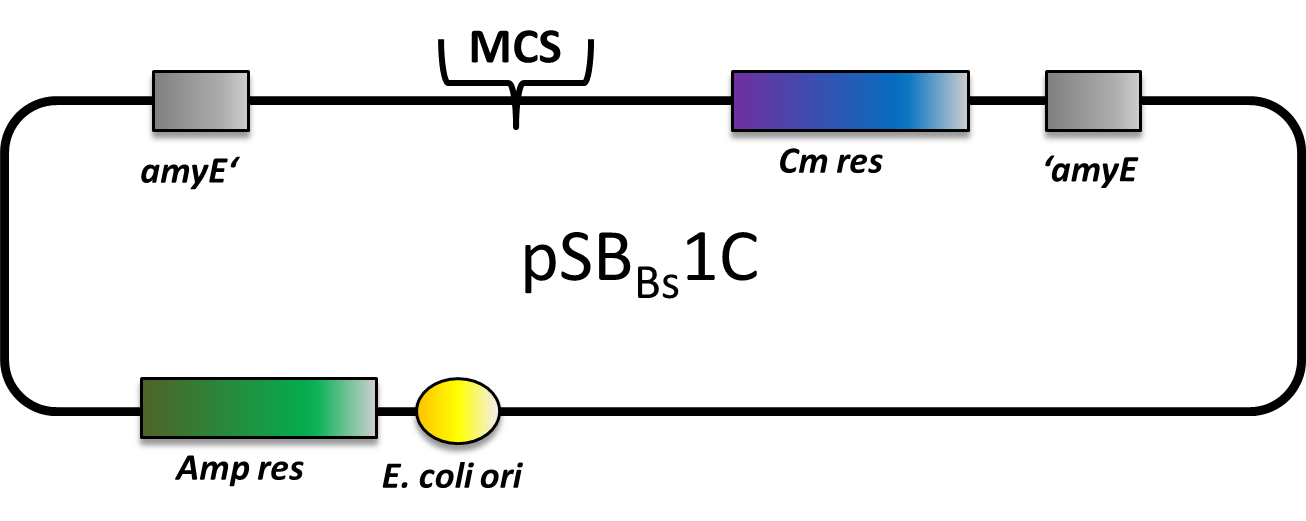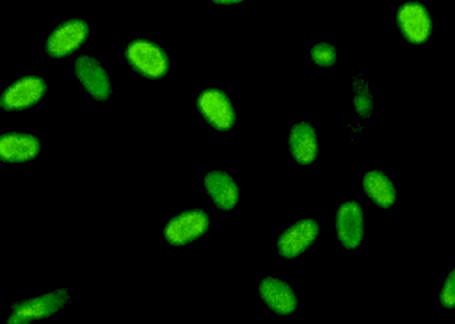Team:LMU-Munich/Bacillus BioBricks
From 2012.igem.org
(Reporter Box) |
(Tags Box) |
||
| Line 56: | Line 56: | ||
==''Bacillus'' Vectors [[File:LMU Backbone.png|100px|link=Team:LMU-Munich/Bacillus_BioBricks#Bacillus_Vectors|Vectors]]== | ==''Bacillus'' Vectors [[File:LMU Backbone.png|100px|link=Team:LMU-Munich/Bacillus_BioBricks#Bacillus_Vectors|Vectors]]== | ||
{| "width=100%" style="text-align:center;" style="align:right"| | {| "width=100%" style="text-align:center;" style="align:right"| | ||
| - | |<p align="justify">We have generated a suit of BioBrick-compatible vectors: three empty insertional backbones with different antibiotic resistances and integration loci, two reporter and two expression vectors | + | |<p align="justify">We have generated a suit of BioBrick-compatible vectors: three empty insertional backbones with different antibiotic resistances and integration loci, two reporter and two expression vectors.</p> |
|[[File:LMU-Munich-PSBBs1C.png|200px|right|link=Team:LMU-Munich/Bacillus BioBricks/Vectors]] | |[[File:LMU-Munich-PSBBs1C.png|200px|right|link=Team:LMU-Munich/Bacillus BioBricks/Vectors]] | ||
|- | |- | ||
| Line 87: | Line 87: | ||
</div> | </div> | ||
| - | + | <div class="box"> | |
| - | + | ||
| - | + | ||
==Affinity Tags [[File:Proteinaffinitytagbutton.png|50px]]== | ==Affinity Tags [[File:Proteinaffinitytagbutton.png|50px]]== | ||
| - | + | {| "width=100%" style="align:right"| | |
| - | + | | | |
| - | <p align="justify"> | + | <p align="justify">We synthesized 5 affinity tags for protein purification. They all are designed in Freiburg standard with an optimized ribosome binding site upstream. We have not yet tested our tags.</p> |
| - | + | |- | |
| - | + | ! colspan="2" |[[File:LMU Arrow purple.png|40px|link=Team:LMU-Munich/Bacillus BioBricks/Tags]] | |
| - | + | |} | |
| - | + | </div> | |
| - | + | ||
| - | + | ||
| - | + | ||
| - | + | ||
| - | + | ||
| - | + | ||
| - | + | ||
| - | + | ||
| - | + | ||
| - | + | ||
| - | + | ||
| - | + | ||
| - | + | ||
| - | + | ||
| - | + | ||
| - | + | ||
| - | + | ||
| - | + | ||
| - | + | ||
| - | + | ||
| - | + | ||
| - | + | ||
| - | + | ||
| - | + | ||
| - | + | ||
| - | + | ||
| - | + | ||
| - | + | ||
| - | + | ||
| - | + | ||
| - | + | ||
| - | + | ||
| - | + | ||
| - | + | ||
| - | + | ||
| - | + | ||
| - | + | ||
| - | [[File: | + | |
| - | + | ||
| - | + | ||
| - | + | ||
| - | + | ||
Revision as of 21:05, 24 October 2012

The LMU-Munich team is exuberantly happy about the great success at the World Championship Jamboree in Boston. Our project Beadzillus finished 4th and won the prize for the "Best Wiki" (with Slovenia) and "Best New Application Project".
[ more news ]


B4 - 22 core parts for Bacillus subtilis
A major goal of our iGEM project is to introduce B. subtilis as a new chassis for BioBrick-based Synthetic Biology. For that purpose, we created a toolbox of Bacillus BioBricks to contribute to the registry to make it accessible to many more future iGEM-Teams! This Bacillus BioBrick Box (B4) contains the following Bacillus specific parts:
| Vectors | Promoters | Reporters | Affinity tags |

| 
| 
| |
|
pSBBs1C |
Anderson |
gfp |
Flag |
Since Bacillus subtilis is not an organism commonly used in iGEM, please check out our Introduction.
Bacillus Vectors 
We have generated a suit of BioBrick-compatible vectors: three empty insertional backbones with different antibiotic resistances and integration loci, two reporter and two expression vectors. | |
Bacillus Promoters 
|
To provide a set of promoters of different strength we characterized several promoters in Bacillus subtilis. Both constitutive and inducible promoters are covered. | |
Bacillus Reporters 
|
We designed and codon-optimized a set of reporters that are commonly used in B. subtilis. | |
Affinity Tags 
|
We synthesized 5 affinity tags for protein purification. They all are designed in Freiburg standard with an optimized ribosome binding site upstream. We have not yet tested our tags. | |

| 
| 
| 
|
| Bacillus Intro | Bacillus BioBrickBox | Sporobeads | Germination STOP |
 "
"






